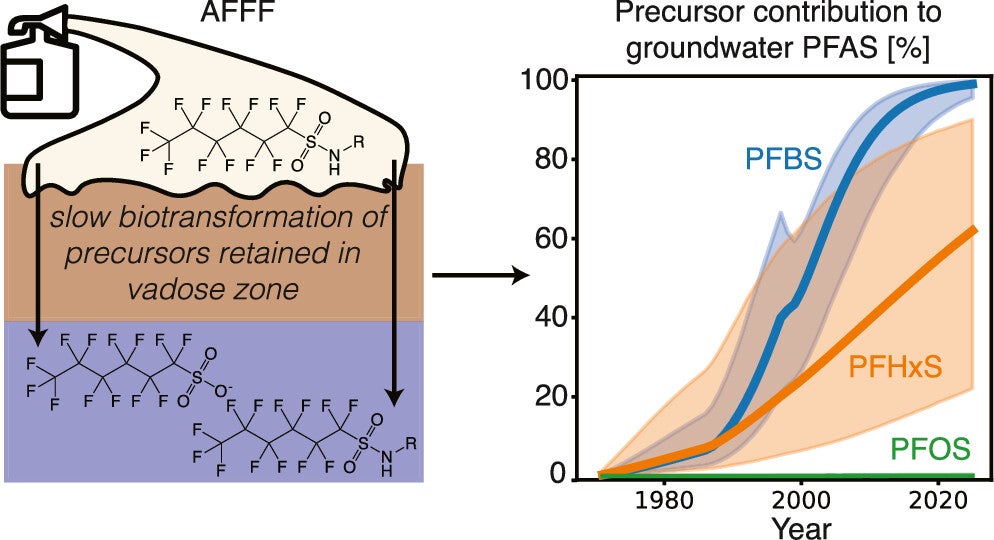A major source of PFAS contamination in drinking water comes from military bases that use AFFFs (Aqueous Film-Forming Foams) for firefighting and fire training purposes. AFFFs are known to contain 1% to 5% PFAS. By comparison, negative health effects from PFAS exposure (such as lowered immune function) can occur from PFAS concentrations of less than 1 nanogram per liter, more than 10 billion times lower than PFAS concentrations in AFFF. While AFFF use is decreasing, the US military remains the largest user and many sites remain contaminated. PFAS at these sites contain precursor molecules, which can transform into a health concern as they are altered by environmental processes. One of these sites is a military base in Cape Cod, Massachusetts, where this research was conducted.
This study, published in 2022 by the Sunderland Lab at Harvard University, deployed computer models and statistics to estimate 1) how significantly precursor molecules contribute to PFAS contamination in ground water near AFFF-contaminated sites; 2) the rate of transfer of PFAS between the surface and groundwater through a connecting layer of soil called the “vadose zone”, and 3) how long those molecules remain in the environment.
Model results demonstrated that precursors in remaining PFAS at AFFF-contaminated sites accounted for an average of 46% of the total PFAS in groundwater, but their contribution increases over time and these chemicals can persist in the environment for centuries. The vadose layer acts as a slow-release contaminant, and the speed at which the layer releases PFAS is dependent on soil composition. As a result, soil and groundwater near AFFF-contaminated sites are a reservoir for PFAS and will continue to release PFAS for centuries without remediation.
Research concludes that remediation will be most effective if targeted on the vadose layer, as most PFAS is trapped in soil before reaching groundwater; groundwater treatment is difficult and costly.
Ruyle, B.J., Thackray, C.P., Butt, C.M., LeBlanc, D.R., Tokranov, A.K., Vecitis, C.D., Sunderland, E.M. 2022. Centurial Persistence of Forever Chemicals at Military Fire Training Sites. Environmental Science & Technology, rq_1114125. DOI: https://doi.org/10.1021/acs.est.3c00675


